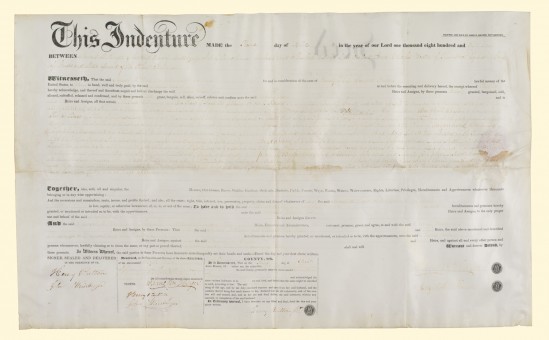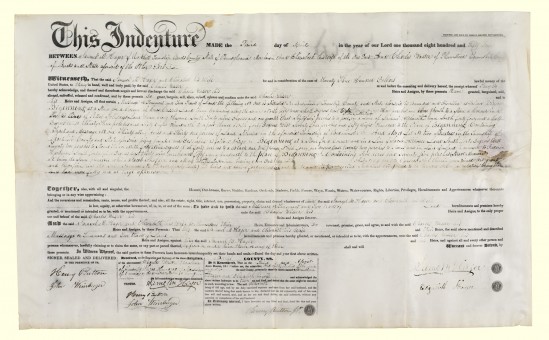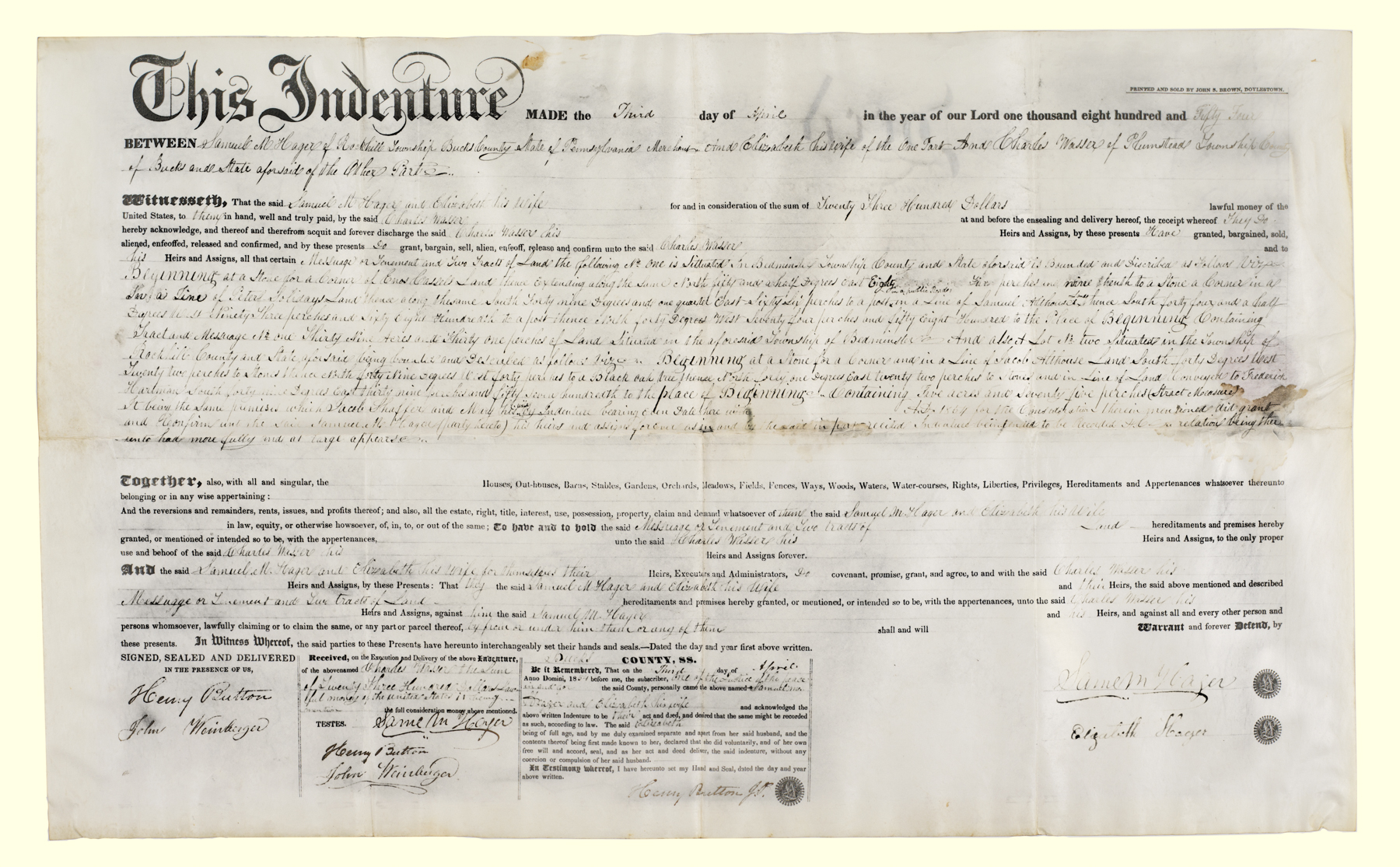
Treatment FOCUS: A Facsimile Made with UV Photography
Ultraviolet (UV) light is harmful. It’s bad for our eyes, bad for our skin, and, unsurprisingly, bad for paper objects. The windows and lights at CCAHA filter UV light, and the glazing we use in frames protects artifacts from the wavelength. But in certain controlled circumstances, UV light can be used for good, as a recent CCAHA project shows.
A client brought in an 1854 indenture whose ink was highly faded. The document was large (15” x 24”) and the fading rendered much of the text illegible. The client wanted a facsimile that was slightly smaller than the original and easier to display at home. In the process of examining the object, CCAHA staff members realized that the parchment might be a great candidate for a special procedure: UV photography.

The original indenture.

The facsimile.
“UV photography can sometimes help illuminate faded ink,” says CCAHA Manager of Digital Imaging Andrew Pinkham, who examined the indenture. "The wavelength picks up on aspects of the ink no longer visible to the naked eye."
Conservators carefully examined the piece using discrete amounts of UV light. “The results were dramatic,” Pinkham says, “The faded text really popped.” This encouraged the conservators to discuss the option of UV photography with the client. Using a UV light source, Pinkham could take a photograph that showed the text. The client agreed, and Pinkham combined this image with a conventional photograph, using Adobe Photoshop to produce an image that maintained the physical characteristics of the original but had legible text.
The resulting facsimile—printed on Hahnemühle Photo Rag 100% Cotton Inkjet Paper using pigmented inks—exceeded the client’s initial request. Not only was the facsimile smaller and safe for long-term display, it showed much more of the original text.

